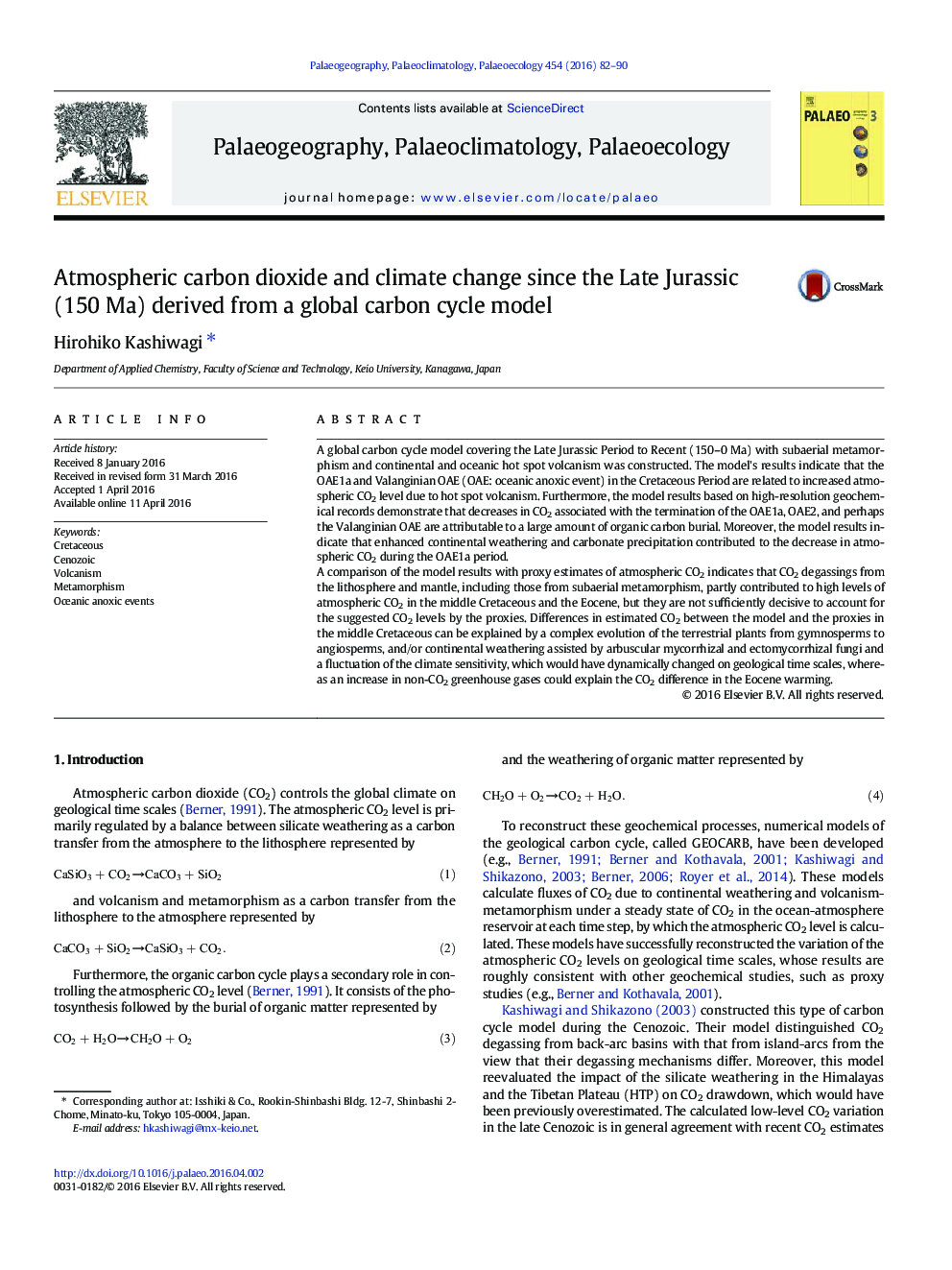| Article ID | Journal | Published Year | Pages | File Type |
|---|---|---|---|---|
| 4465599 | Palaeogeography, Palaeoclimatology, Palaeoecology | 2016 | 9 Pages |
•A carbon cycle model including subaerial metamorphism and continental and oceanic hot spot volcanisms is constructed.•Oceanic anoxic events correlate well with hot spot volcanism, organic carbon burial, and continental weathering.•Terrestrial plant evolution and climate sensitivity are key parameters to constrain the calculated atmospheric CO2 in the model.
A global carbon cycle model covering the Late Jurassic Period to Recent (150–0 Ma) with subaerial metamorphism and continental and oceanic hot spot volcanism was constructed. The model's results indicate that the OAE1a and Valanginian OAE (OAE: oceanic anoxic event) in the Cretaceous Period are related to increased atmospheric CO2 level due to hot spot volcanism. Furthermore, the model results based on high-resolution geochemical records demonstrate that decreases in CO2 associated with the termination of the OAE1a, OAE2, and perhaps the Valanginian OAE are attributable to a large amount of organic carbon burial. Moreover, the model results indicate that enhanced continental weathering and carbonate precipitation contributed to the decrease in atmospheric CO2 during the OAE1a period.A comparison of the model results with proxy estimates of atmospheric CO2 indicates that CO2 degassings from the lithosphere and mantle, including those from subaerial metamorphism, partly contributed to high levels of atmospheric CO2 in the middle Cretaceous and the Eocene, but they are not sufficiently decisive to account for the suggested CO2 levels by the proxies. Differences in estimated CO2 between the model and the proxies in the middle Cretaceous can be explained by a complex evolution of the terrestrial plants from gymnosperms to angiosperms, and/or continental weathering assisted by arbuscular mycorrhizal and ectomycorrhizal fungi and a fluctuation of the climate sensitivity, which would have dynamically changed on geological time scales, whereas an increase in non-CO2 greenhouse gases could explain the CO2 difference in the Eocene warming.
Graphical abstractFigure optionsDownload full-size imageDownload high-quality image (158 K)Download as PowerPoint slide
